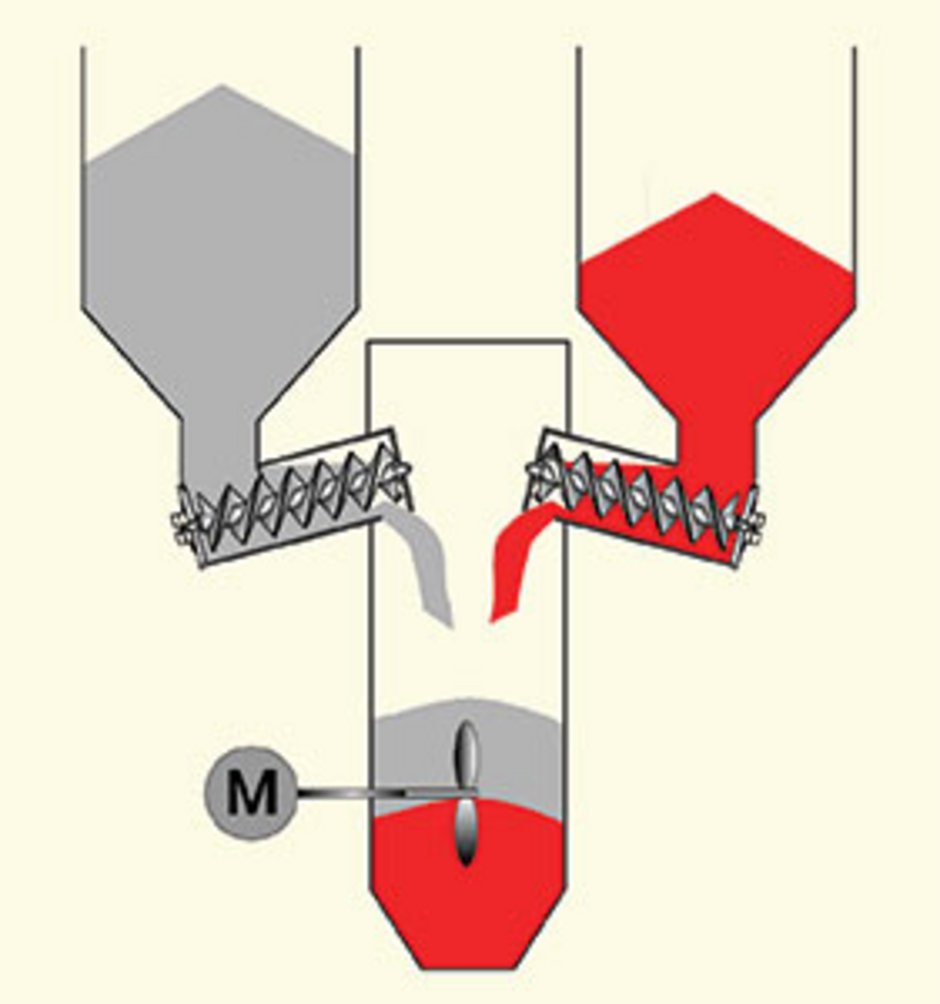06 - How do asynchronous dosing systems work?

Volumetric dosing systems can be operated asynchronously or synchronously. For each method, you can choose between metering all components or metering all components except the main one.
For asynchronous dosing where all the components are metered, all materials for a recipe are fed to a mixer from their respective dosing modules. The control system for the dosing unit is not integrated with the control system of the downstream equipment. A probe in the mixer starts and stops the dosing cycle when it detects material. The dosing system runs until the probe is covered again and the final dosing cycle is completely finished.
Alternatively, there is the variation where all components except the main one are metered. This is frequently deployed for injection moulding machines for the addition of one or two ingredients (additives). In this method, the main component (granulate) is continuously fed into throat of the processing machine. However, you have no control over its flow rate.
The control system requires information on the shot- weight of the injection moulding machine. Based on this data, the system can calculate how much of each additive must be dosed.
The dosing cycle is triggered by a signal issued from the injection moulding machine.
Compared to metering all components, this method offers an advantage because it requires one less dosing module while maintaining the same standard of quality.
When it comes to mixing, the properties of the ingredients must be taken into account. Blending materials with different bulk densities can result in unwanted segregation. This can be partly prevented by switching the mixer on and off and running shorter mixing cycles.
The size of the mixing hopper is important to ensure sufficient time for effective blending of the recipe components over multiple cycles. As a result, the maximum possible throughput of the dosing and mixing unit does not only depend on the capacity of the dosing modules but also on the size of the mixing hopper.
In the next issue, we will take a closer look at synchronous dosing.
You want to have an example for an asynchronous dosing unit? You can find it on www.motan.com
